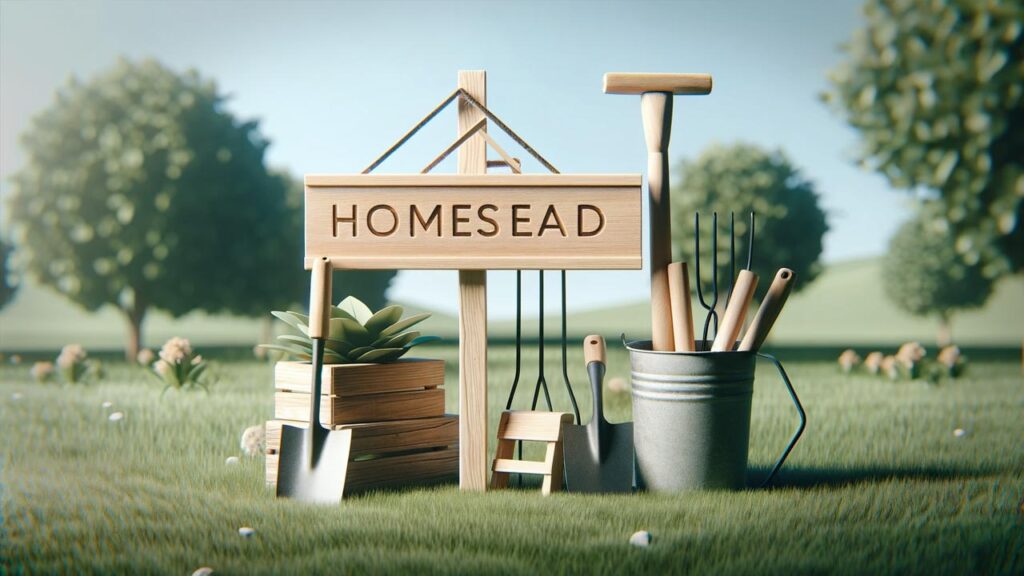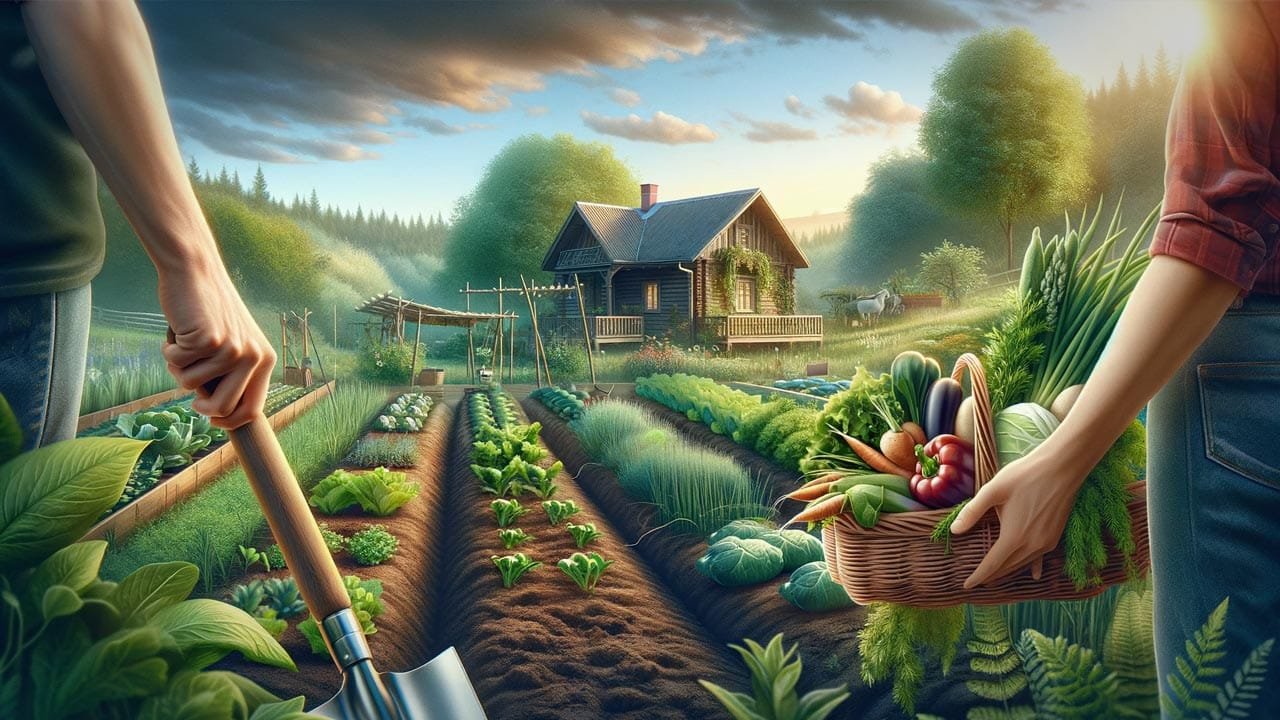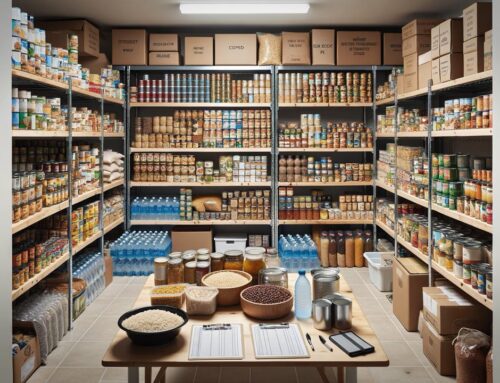Self-Sufficient Lifestyle, Homesteading Basics
Homesteading Basics, ever feel the pull of nature and a simpler life away from the hectic pace of modern society? You’re not alone. Increasingly, people are turning to homesteading, a lifestyle choice that emphasizes self-sufficiency, sustainability, and a profound connection with the natural world. It’s about being in control of your food source, living off the land, and breaking free from the mainstream economy’s hold. This isn’t just a hobby; it’s a transformative way of life. Dive into this journey of self-reliance with us as we explore what homesteading truly means.
Key Takeaways
- Homesteading is a self-sufficient lifestyle, deeply rooted in sustainability and independence.
- Key components include growing your own food, managing resources, and sustainable living.
- Homesteading offers a path to a fulfilling, eco-friendly, and personally rewarding life.
Table of Contents
- Understanding Homesteading And Self-Sufficiency
- Why Is Self-Sufficiency Important For Homesteaders?
- The Basics Of Self-Sufficient Homesteading
- Skills Needed For A Self-Sufficient Homestead
- Planning Your Self-Sufficient Homestead
- Implementing Self-Sufficient Homestead Systems
- Frequently Asked Questions
- Conclusion
Understanding Homesteading And Self-Sufficiency
The concept of homesteading dates back to the Homestead Act of 1862 in the U.S., where land was offered to those willing to cultivate it. Today, it has evolved into a lifestyle that is centered around self-sufficiency and sustainability. Homesteading involves a range of practices like organic gardening, livestock raising, and using renewable energy sources. It’s about establishing a home that caters to its own needs, reducing reliance on external commercial resources. Self-sufficiency, in this context, means meeting your basic life needs through your own resources, balancing a lifestyle where you control your basic needs and use external resources minimally and mindfully.
Why Is Self-Sufficiency Important For Homesteaders?
Self-sufficiency is not just about survival; it represents a lifestyle that is sustainable, fulfilling, and in tune with nature. It offers independence and security, allowing you to have control over your basic needs, not reliant on external systems. This self-reliance brings a sense of security and independence. Sustainable practices reduce environmental impact and contribute to a sustainable future. Economically, it leads to significant savings, and the skills learned on this journey are practical, instilling a sense of achievement and confidence. Most importantly, it fosters resilience, enabling homesteaders to adapt and overcome challenges.
For more insights into whether a self-sufficient homestead is the right fit for you.
The Basics Of Self-Sufficient Homesteading
Embarking on a self-sufficient lifestyle involves a direct and sustainable approach to addressing basic needs. Key areas include:
- Food Production: The cornerstone of self-sufficiency. This involves practices like gardening and livestock raising, directly participating in the life cycle and harnessing it for sustenance.
- Water Management: Essential for life, a self-sufficient homestead manages water resources wisely through methods like rainwater collection and efficient usage.
- Energy: Finding sustainable energy sources, such as solar panels or wind turbines, is crucial for reducing reliance on non-renewable sources.
- Shelter: Building a sustainable home, possibly using eco-friendly materials and design, is vital for a harmonious and efficient living environment.
Skills Needed For A Self-Sufficient Homestead
A diverse set of skills is essential for a self-sufficient lifestyle:
- Gardening and Farming: Fundamental for growing food.
- Animal Care: Essential for raising livestock.
- Food Preservation: Critical for ensuring a year-round food supply.
- Carpentry and DIY: Useful for building and repairs.
- Natural Medicine: Beneficial for basic healthcare.
- Resource Management: Key for efficient and sustainable systems.
- Problem-solving and Adaptability: Crucial for dealing with unexpected challenges.

Planning Your Self-Sufficient Homestead
Creating a self-sufficient homestead requires thoughtful planning:
- Assess Your Needs: Understand your food, shelter, and energy requirements.
- Evaluate Resources: Consider your land, climate, skills, and time.
- Choose Plants and Animals: Select based on your environment and capabilities.
- Design Homestead Layout: Optimize for efficiency and sustainability.
- Focus on Sustainability: Make environmentally conscious decisions.
- Start Small and Expand: Begin with manageable projects and grow gradually.
Implementing Self-Sufficient Homestead Systems
The next step is establishing systems to support your lifestyle:
- Self-Sustaining Farm: Implement practices like crop rotation and natural pest control.
- Renewable Energy Systems: Explore options like solar panels or wind turbines.
- Water Management Systems: Set up rainwater harvesting and efficient usage systems.
- Sustainable Shelter: Utilize eco-friendly materials and designs.
- Food Preservation Practices: Adopt methods like canning and freezing to store excess produce.
Frequently Asked Questions
Conclusion
Embracing a self-sufficient lifestyle through homesteading is more than just a return to the basics; it’s a transformative journey towards independence, sustainability, and a deeper connection with nature. While it presents its unique challenges, the rewards of self-reliance, resilience, and a harmonious relationship with the environment are immeasurable. Whether it’s growing your own food, harnessing renewable energy, or building a sustainable shelter, each step towards self-sufficiency is a stride towards a more fulfilling and responsible way of living. Homesteading isn’t just about surviving; it’s about thriving in harmony with the natural world, a testament to the enduring human spirit and its capability to adapt and flourish.







Leave A Comment